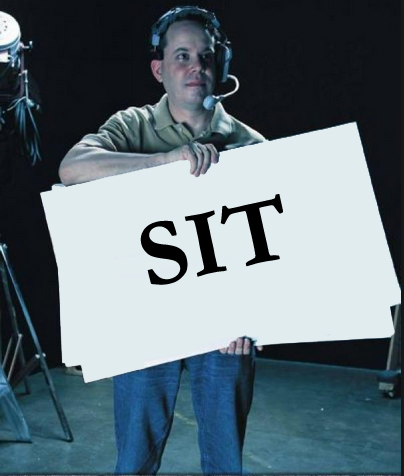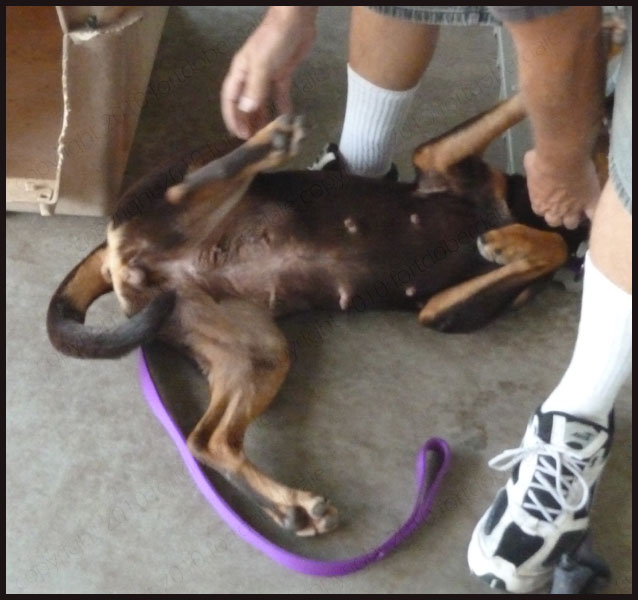I was with a client last weekend who was about to put a head halter on her dog. He was moving off to the side, engrossed in something, and my client reached for him and began to struggle. So I said, “Use your cue. Cue him to sit.” And she did. And he did. And the head halter was put on with a slide of the strap over the muzzle, a treat, and a snap of the clasp. Then we moved along.
 Use your cues. If you spend time training your dog, use your cues when you need them. It’s helpful to you, and the dog will feel much more comfortable complying with a task he already knows than having someone man handle him into a position.
Use your cues. If you spend time training your dog, use your cues when you need them. It’s helpful to you, and the dog will feel much more comfortable complying with a task he already knows than having someone man handle him into a position.
Most dogs learn how to sit on cue from their owners. It’s one of the basic cues that would be in the Dog Cue Hall of Fame if there were such a thing. The problem is that many owners forget to use cues when they’d really come in handy. So take time to learn the habit of cuing your dog to sit periodically on a walkie. Or during the day in the house. Or backyard. Any place. And remember to pay him with a treat periodically as well. Don’t dry up the well. Remind him his responses to your cues, those precious behaviors he offers you, are worth something to you.
Here’s a pictorial example from last month, when I visited a rescue to take pictures of several dogs who need homes. This one is a love. We went into her kennel run, and to show she was no threat, she rolled on her back. The man was going to manually put her upright, when I asked him, “Does she know how to sit on cue?” He told me she did, so I pulled out some treats and asked him to stand upright.
Then I let her sniff the treats, and lured her into a sit. Look at her face! Is that focus? Yes. And this is what motivational dog training looks like. It starts like this, and it gets better and better for both the handler and the dog.
This is the kind of face reward-based dog training creates. Anticipation! What’s next? We have engagement, and most of all, this dog is not fearful. This dog is ready for more. And we used one cue to get her here.
Sit is one of the must-have cues in your dog’s repertoire. After you teach it to your dog, remember to use it during your day-to-day routines. And praise, treat, and reward that dog!
By Helen Verte
Certified Pet Dog Trainer-Knowledge Assessed, Certified Trick Dog Instructor
Dog Behavior Expertise, Broward County, Fort Lauderdale



